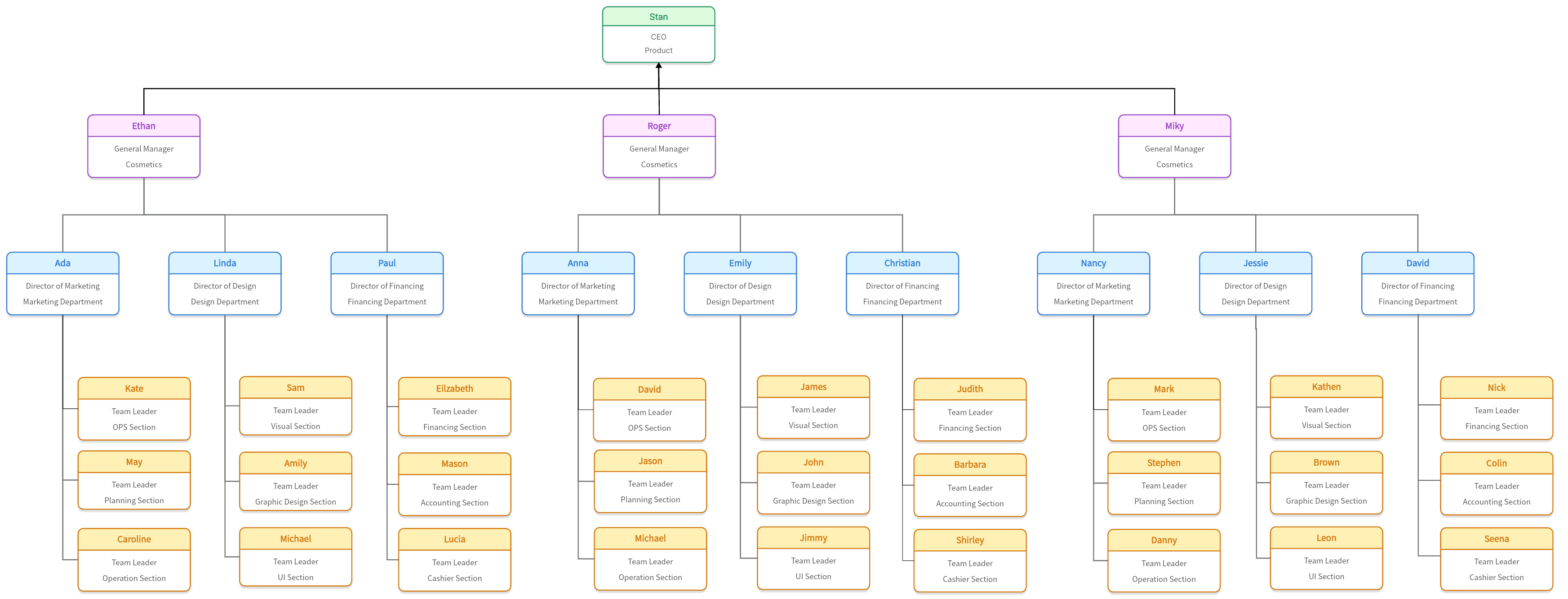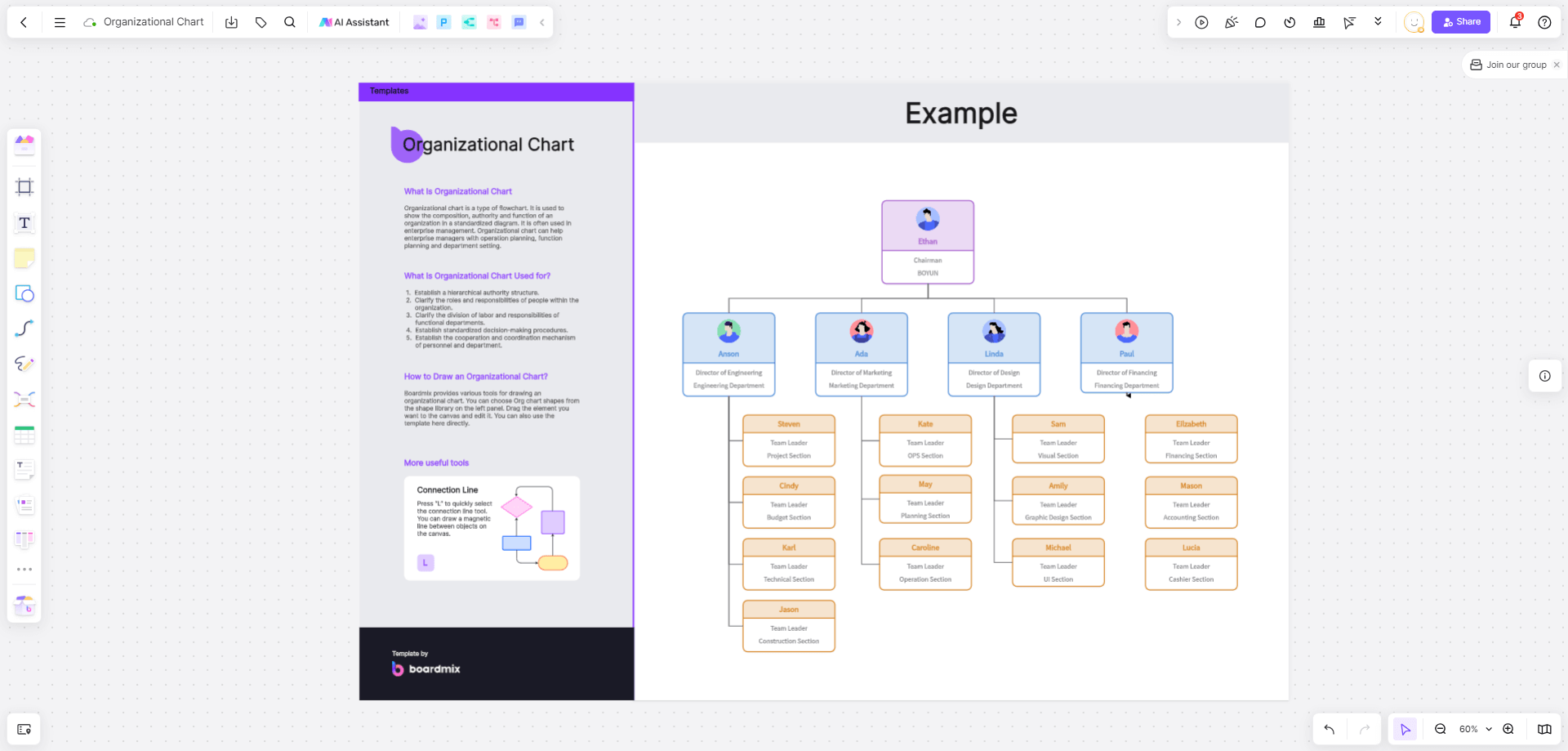In today's dynamic and complex business environment, the importance of the organizational structure in driving efficiency, adaptability, and innovation cannot be overstated. A significant part of this discourse focuses on the divisional organizational structure, which provides a significant level of autonomy and flexibility to different segments of a business. To fully understand the impact of divisional organizational structures, we will delve deeper into its definition, functioning, pros, and cons.
What is a Divisional Organizational Structure?
A divisional organizational structure, also known as a "product structure," is an arrangement in a firm where every major product area is placed under the authority of a manager who is responsible for all aspects related to that product line. This model sets up independent divisions, allowing each to focus on different products or services and cater to different markets.
In such a structure, each division essentially operates as a separate company, having its own set of resources including a workforce and budget, and making decisions concerning production, marketing, pricing, and more. This setup not only promotes autonomy but also creates an environment where the division's performances are directly attributable, fostering a sense of ownership and accountability among the employees.
To clarify with an example, consider a multinational consumer goods company. It could have divisions for cosmetics, home care products, food and beverages, each managed independently. Each of these divisions could have its operations spread across various regions, yet their core focus remains the same - catering to the specific needs of their respective markets.

How does a Divisional Organizational Structure Work?
The divisional structure functions by breaking down the organization into self-contained units or divisions, each responsible for its own performance and contributing to the overall success of the organization. These divisions could be established based on numerous factors like product lines, geographical markets, or customer demographics.
Every division in this structure operates as if it were a separate entity or a small business in itself. This includes having its own set of functional units like marketing, finance, human resources, production units - all dedicated to achieving the goals of that division. Such dedicated teams provide divisions with an edge in expertise regarding their specific products or markets.
Continuing from the previous example, in a consumer goods company with multiple divisions like cosmetics, home care, and food and beverages - each division will have separate teams for marketing their products, managing their finances, producing their goods, and hiring talent for their operations. This specialized approach ensures efficient handling of individual product lines and better responsiveness to market trends and customer demands.
At the topmost level is the corporate office or the head office that coordinates activities across all divisions and aligns them with the overall corporate strategy. The head office also facilitates resource allocation and mitigates any conflict or competition that may arise between divisions.
Advantages of Divisional Organizational Structures
Divisional organizational structures bring a multitude of benefits that help an organization succeed in a dynamic and competitive business environment.
- Flexibility:One of the key advantages of a divisional organizational structure is its inherent flexibility. By functioning as semi-autonomous units, divisions can make quick decisions tailored to their specific market or product needs. This means each division can adapt swiftly to changes in market conditions or customer preferences, responding with timely alterations in strategy or product modifications. In a rapidly changing business environment, this flexibility can offer a vital competitive edge.
- Specialization:A divisional structure encourages the development of specialization. Since each division focuses on a specific product line or market segment, they cultivate an in-depth understanding and expertise in their specific field. Over time, this concentrated knowledge can significantly improve the quality of product development and customer service. The improved quality and customer experience can enhance customer loyalty, providing a strong foundation for sustainable growth.
- Competition:In a divisional structure, an internal competitive environment is fostered as divisions strive to outperform one another. This friendly rivalry can fuel innovation as divisions seek to differentiate their offerings and optimize productivity levels. By stimulating competition within the organization, the divisional structure indirectly drives the company's overall growth and profitability.
- Growth Opportunities:The divisional structure provides a well-defined path for organizational expansion. If a company decides to introduce new products or expand into different markets, it can seamlessly incorporate these as new divisions within the existing organizational structure. This adaptability not only streamlines expansion but also mitigates potential operational disruptions during growth phases.
- Performance Tracking:The semi-autonomous nature of divisions within this structure simplifies performance evaluation. Each division’s performance can be tracked separately because they function almost like separate companies under the umbrella of the larger organization. This transparent performance assessment enables efficient identification of strong and weak performers, which helps in developing focused improvement strategies and maintaining accountability at all levels.
Disadvantages of Divisional Organizational Structures
While the divisional organizational structure has a host of benefits, it is crucial to consider its potential drawbacks. Organizations need to be aware of these disadvantages and mitigate them effectively for the successful implementation and functioning of the divisional structure.
- Resource Duplication:In a divisional structure, each division operates independently with its own resources, such as marketing, HR, and operations departments. This autonomy can lead to a duplication of resources across divisions, leading to potential inefficiencies. For example, multiple divisions could end up hiring their own IT personnel, which could lead to a higher expenditure compared to having a centralized IT department serving all divisions.
- Inter-divisional Conflict:The divisional structure fosters an environment of competition between divisions. While this rivalry can encourage innovation and productivity, it can also cause conflicts, particularly when divisions compete for the same organizational resources. Resolving such conflicts can consume valuable time and resources that could otherwise be directed towards achieving strategic objectives.
- Misaligned Goals:The semi-autonomous nature of divisions may result in each pursuing their individual goals at the cost of the overall organizational objectives. For example, a division may opt for strategies that bolster its short-term profitability while undermining the long-term strategic vision of the organization. Therefore, effective communication and alignment of divisional and organizational goals are essential in a divisional structure.
- Costs:Maintaining a divisional structure can be more costly than other organizational structures. Each division requires its own set of resources and a dedicated management team, which can significantly increase operating costs. It is necessary to ensure that the benefits derived from this structure justify the additional costs incurred.
- Knowledge Sharing Issues:Divisions operating independently might restrict the flow of knowledge and best practices between them. This lack of cross-divisional communication could limit the potential for synergy and shared learning, which could hinder innovation and efficiency in the longer term.

Tips for Using Divisional Organizational Structure
While the divisional organizational structure presents a unique set of advantages, it is vital for organizations to effectively navigate its potential challenges for successful implementation. The following tips can guide organizations in using the divisional structure to maximize benefits and minimize disadvantages.
- Maintain Clear Communication:Effective inter-divisional communication is essential in a divisional organizational structure to align the goals of individual divisions with those of the broader organization. Regular meetings and discussions can help maintain this alignment and foster a shared vision across all divisions.
- Balance Autonomy and Control:While granting divisions the autonomy to manage their own operations can boost productivity and efficiency, there should also be adequate control mechanisms in place. These can include regular reporting, performance monitoring, and standardized procedures to ensure consistency and alignment with overall organizational objectives.
- Encourage Collaboration:Promote collaboration and knowledge sharing across divisions to capitalize on the diverse expertise within the organization. Cross-divisional teams or projects can provide opportunities for learning and innovation, enhancing overall organizational performance.
- Monitor Performance Regularly:With each division functioning as a separate unit, tracking performance becomes critical. Regular performance assessments can help identify high-performing divisions and those that need improvement. The insights gained from these evaluations can inform decision-making and strategy development.
- Manage Resources Efficiently:To prevent resource duplication, consider which functions could be centralized. For example, administrative functions like HR or IT could serve multiple divisions, reducing costs and promoting efficiency.
- Promote Healthy Competition:Foster an environment that encourages competition among divisions but simultaneously promotes teamwork and cooperation. Recognize and reward the efforts of high-performing divisions to motivate all divisions to strive for excellence.
- Prepare for Change:The dynamic nature of a divisional structure requires an organization to be prepared for change. As new products or markets are introduced, new divisions may be created, requiring shifts in resources and personnel. Being adaptable will ensure the organization can effectively respond to these changes.
Divisional Organizational Structure in Practice: Real-World Examples
In examining the divisional organizational structure, it's instructive to explore real-world examples. Several globally recognized companies across various sectors have effectively implemented this structure, leveraging its benefits to drive business growth and success. Below are examples from the technology, automotive, and fast food sectors to provide a comprehensive view of how a divisional organizational structure works in practice.
- Apple Inc. - Technology Sector:Apple Inc., one of the most successful companies in the technology sector, employs a divisional organizational structure based on function and geography. The company is segmented into various divisions such as iPhone, iPad, Mac, Apple Watch, Services, and others, each focusing on a specific product line. This divisional structure allows Apple to specialize and focus on the development and marketing of each product effectively.
- General Motors - Automotive Sector:General Motors (GM), one of the leading players in the automotive industry, operates using a divisional structure. GM's divisions include Chevrolet, GMC, Buick, and Cadillac, each operating semi-autonomously while targeting different market segments. For instance, Chevrolet focuses on mainstream consumers, while Cadillac targets the luxury vehicle market. This structure has enabled GM to cater to diverse customer needs and preferences.
- Yum! Brands - Fast Food Sector:In the fast food industry, Yum! Brands, the parent company of KFC, Pizza Hut, and Taco Bell, also utilizes a divisional organizational structure. Each brand operates as a separate division with its unique identity, targeted audience, and dedicated resources. This strategy allows each brand to focus on delivering a differentiated dining experience and innovate according to their customer's preferences.
Frequently Asked Questions about Divisional Organizational Structures
Are there any Alternatives to a Divisional Organizational Structure?
Yes, there are several other major organizational structures such as Functional, Matrix, Network, and Flat structures. Each has its unique features and suitability depending on the organization's size, goals, and industry. For a more in-depth exploration of different organizational structures, consider reading "8 Types of Organizational Structures for Businesses."
What is the difference between a Divisional and Functional Organization?
While a divisional organization focuses on individual products or markets, a functional organization structures its activities based on business functions such as marketing, production, and finance.
Is Microsoft a Divisional or Functional Organization?
Microsoft has adopted a hybrid organizational structure, combining aspects of both divisional and functional organizations. It has product-based divisions along with functional groups.














